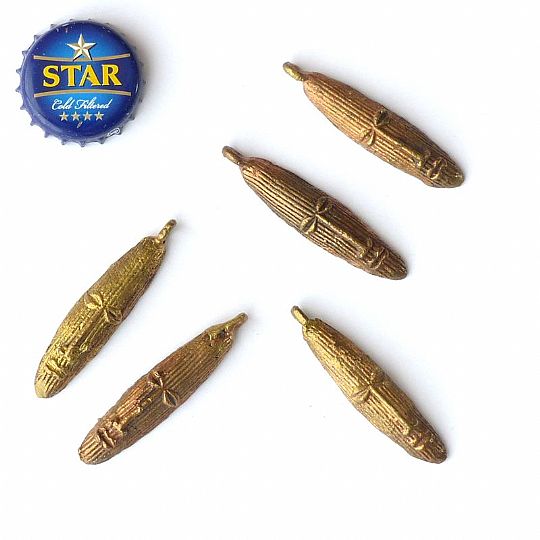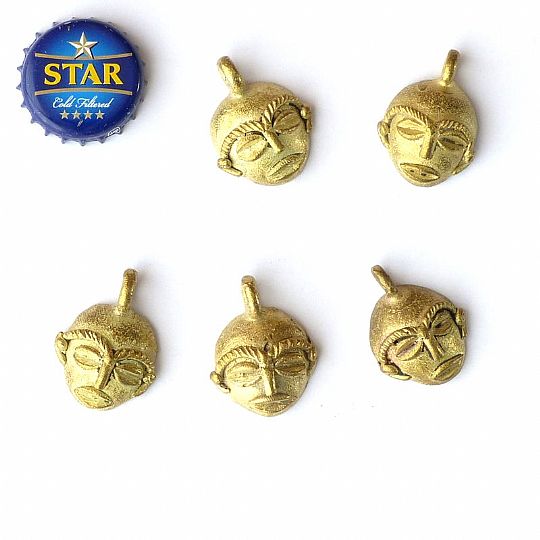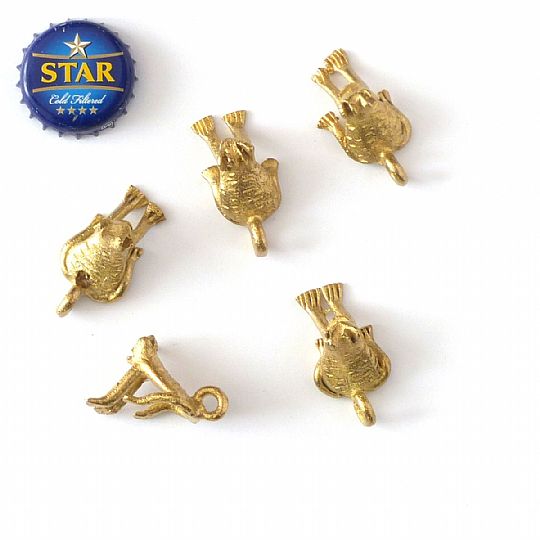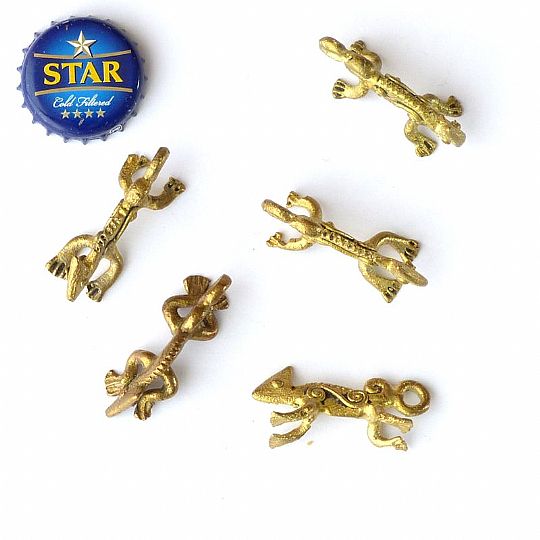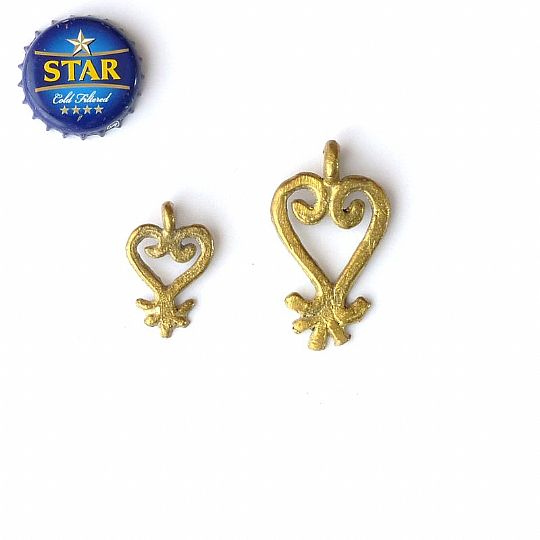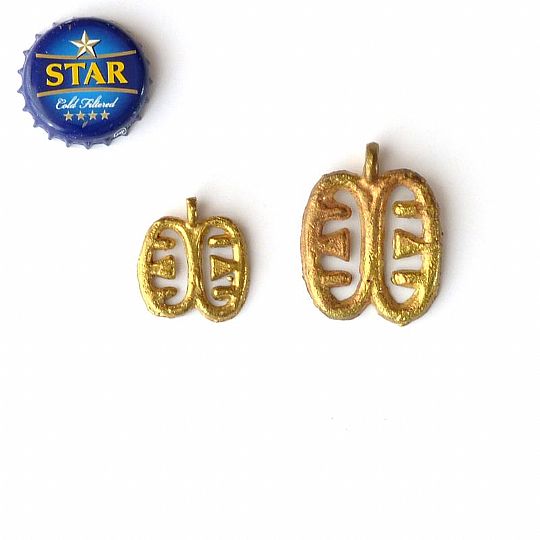Handmade brass pendants from Ghana
Our recycled brass pendants are made using the ancient 'lost wax' technique by a community of master bead makers near Kumasi, capital of the old Ashanti kingdom.
Each pendant is created first in bee's wax, then covered in clay. When the mould is fired in the kiln, the wax melts away to be replaced by molten brass. When the mould cools, it is broken apart to reveal the finished brass bead. Because the mould is destroyed to extract the finished work, each pendant is totally unique.
Some of our pendants are Adinkra symbols, which have names and represent traditional proverbs. For the proverbial meanings of these symbols, see individual pendants.
Bead size and scale
As a visual clue to the size and scale of our beads, we use a Star beer cap in our bead images. Why Star? Because it's the major beer of Ghana where most of our beads are made. Also, on the buy pages, we indicate approximate bead dimensions in millimetres.

More: About recycled brass beads
Lost wax casting: ancient technology meets modern recycling
In West Africa metal workers have been melting and casting brass and other metals into objects for centuries. Probably the most famous example is the Benin Bronzes - a set of 200 plaques taken from the Benin Kingdom (now Nigeria) by the British in 1897 and today held by the British Museum.
This ancient technique for casting metals is called 'lost wax' and it is still used today in the Ashanti Kingdom of central Ghana. Today's skilled craftsmen make brass beads and pendants, as well as larger decorative pieces.
We buy all of our brass beads and pendants from the makers of Korofrom, a village just outside Kumasi.
Making recycled brass beads and pendants
For the 'lost wax' method, every item to be cast in brass begins as a model made from bees' wax. For a large object, this takes a lot of wax. For smaller items like beads, it takes less wax but correspondingly more time to fashion a tiny, highly detailed wax model.
Consider a typical bead. The maker begins with a clay core that is the shape and size of the finished bead. He - only men work with brass - fills a length of pipe with wax. In the end of the pipe is a bottle cap with a tiny hole in the centre. Using a threaded plunger, he compresses the wax in the pipe, forcing it through the hole in the bottle cap to make a pile of thin wax spaghetti.
He then wraps strands of this wax spaghetti around the clay form in an intricate design to fashion a bead. Clumps of several beads joined by strands of wax spaghetti are then dipped in a 'slip' made of fine clay which fills all of the gaps and cavities.
Around this, the maker packs a heavier layer of clay mixed with coconut fibre.
This lump of clay containing many small wax models is then fired in a kiln.
When the wax melts into a liquid, it is poured out. This leaves a hollow clay mould.
Then, the maker melts scrap brass - usually old padlocks and car parts - and pours the molten metal into the hollow mould.
When the brass cools down it hardens into solid metal again.
The maker then breaks the mould into pieces to reveal the brass beads inside. After finishing and polishing, the beads are ready for market.
What makes these brass beads so special?
Mainly, it is the time it takes to make them. And remember: because the moulds must be broken to extract the finished piece, each bead is totally unique.
 Scrap brass: car parts and plumbing become recycled brass beads in Korofrom, Ghana.
Scrap brass: car parts and plumbing become recycled brass beads in Korofrom, Ghana. Model beads made from bees' wax.
Model beads made from bees' wax.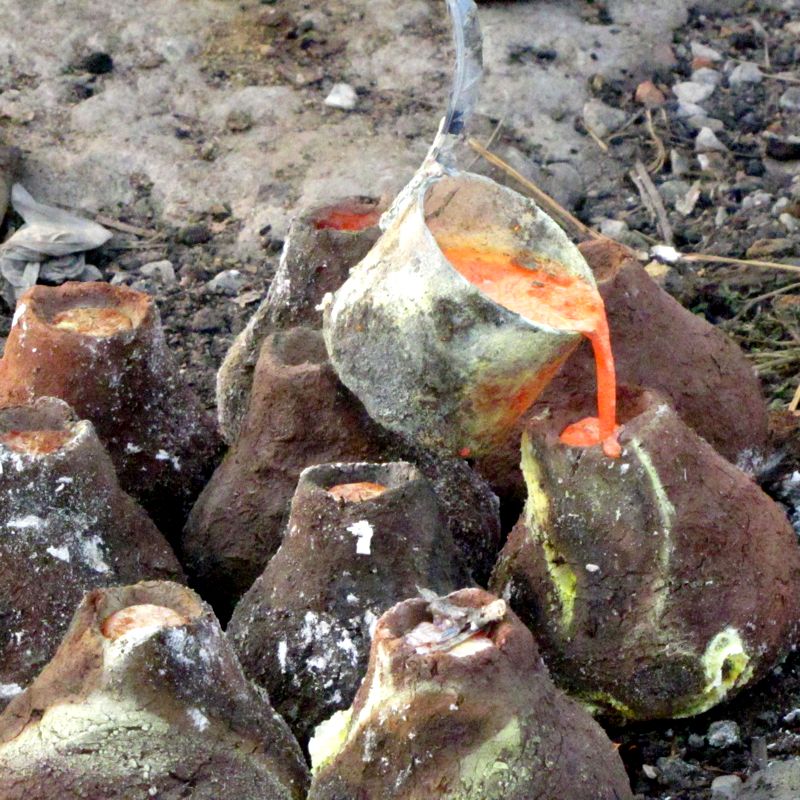 Pouring molten brass into crucibles containing the hollow bead moulds after the wax has been melted and poured away.
Pouring molten brass into crucibles containing the hollow bead moulds after the wax has been melted and poured away.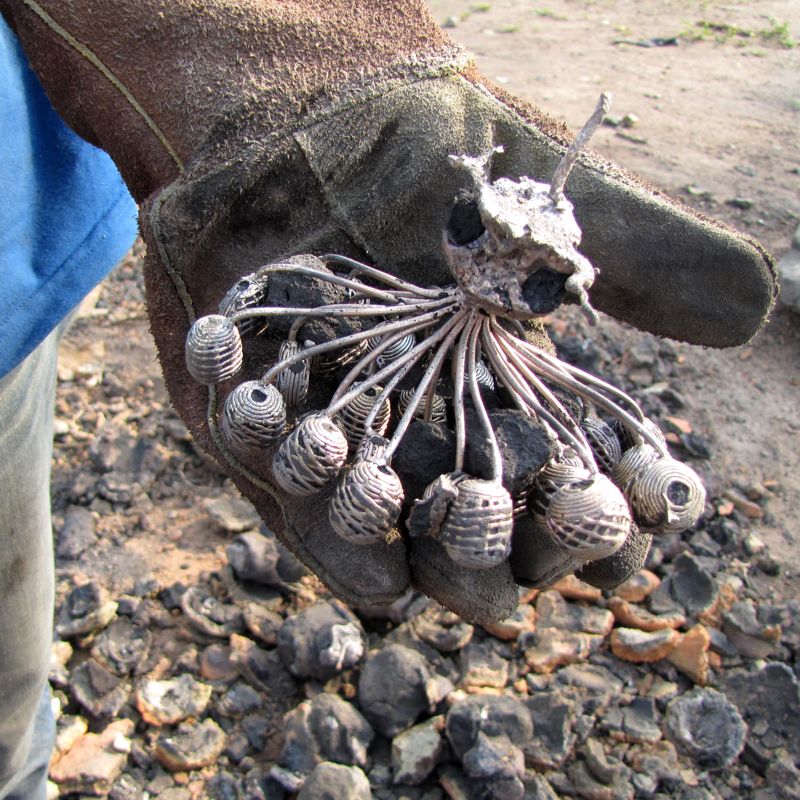 Brass beads emerge after the moulds are broken open.
Brass beads emerge after the moulds are broken open. Wax models ready for the fire: Korofrom, near Kumasi, Ghana.
Wax models ready for the fire: Korofrom, near Kumasi, Ghana.
